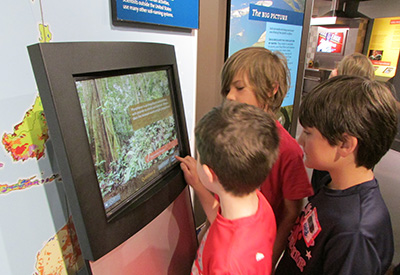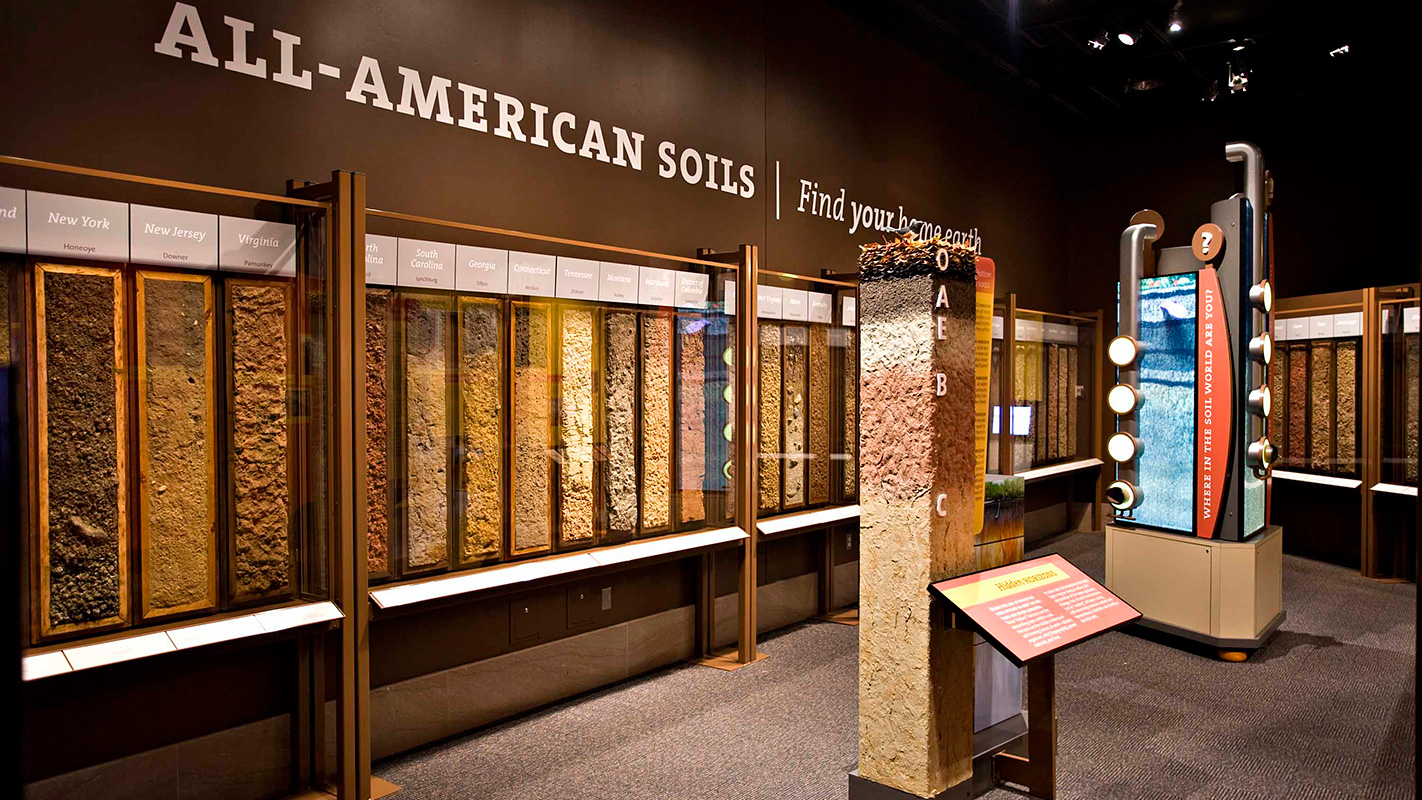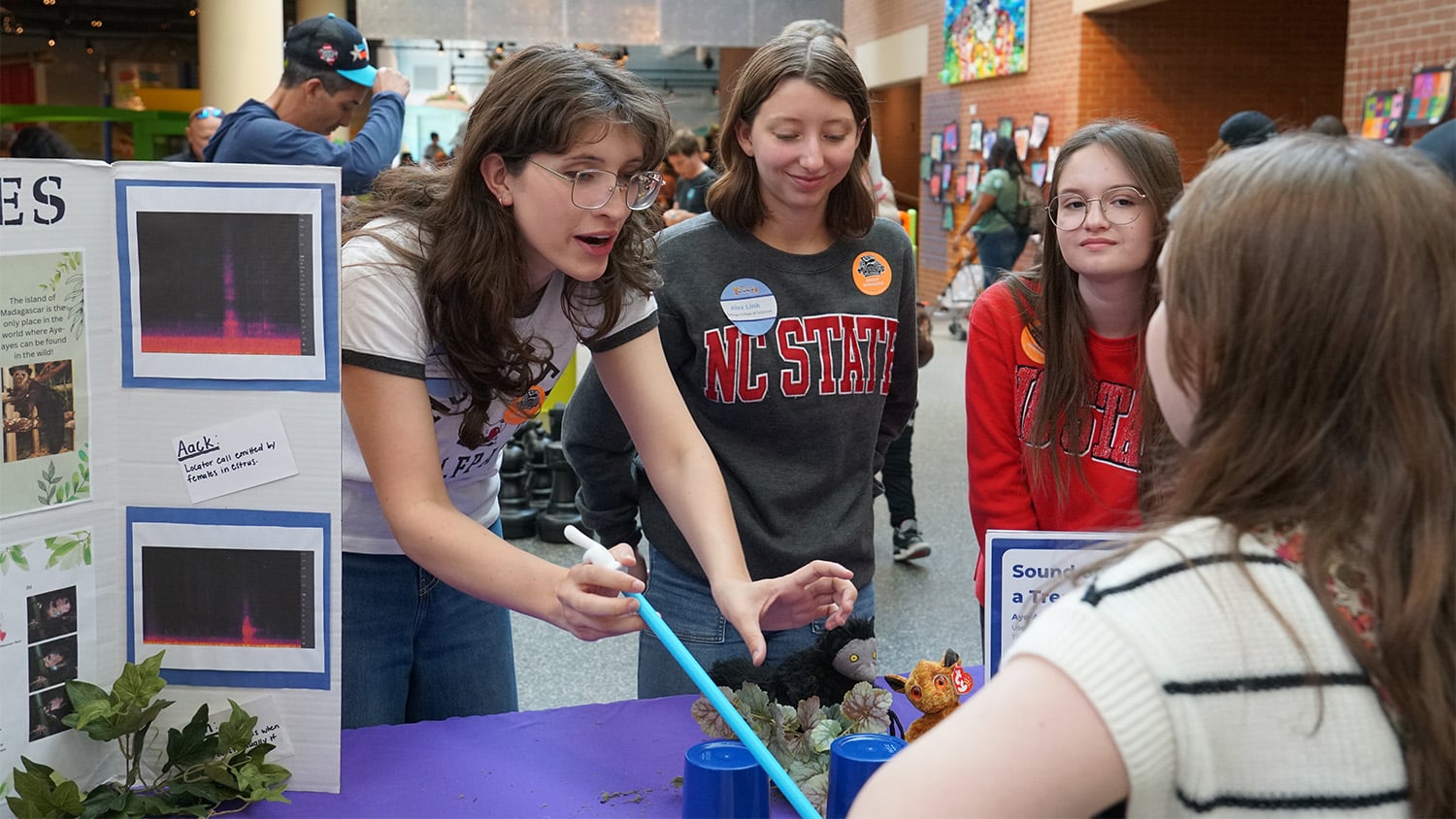Soil is much more than dirt. It’s a dynamic resource that supports nearly every form of life on Earth, and an exhibit on display this month at a Raleigh museum is aimed at raising the public’s awareness of its value and complexity.
The 5,000-square-foot exhibit, Dig It! The Secrets of Soil, which has strong ties to NC State, opens May 16 at the North Carolina Museum of Natural Sciences. Through videos, hands-on activities, real soil samples and touch-screen interactive displays, the exhibit helps visitors understand how soil is connected to agriculture, architecture and construction, art and rituals, recreation, water filtration, greenhouse gas sequestration and more.
In a 2,000-square-foot classroom attached to the exhibit space, a number of programs are scheduled for members of Envirothon, 4-H, FFA and other K-12 groups. Faculty members and students in NC State’s Department of Soil Science, one of the country’s top departments of its kind, will be involved in many of these programs.
All About Kids
Dig It! was conceived in the 1990s as a means of enhancing K-12 students’ knowledge of soil science, says professor John Havlin.

“It’s all about the kids. The future of our country depends on having a population that recognizes the need to sustain and enhance our soils,” he says. “Most people don’t understand how diverse and important our soils are, and without an informed population, our nation will be weakened.”
It’s estimated that one-half of the world’s soils are degraded. And that’s significant because people depend on soils for food, clothes, homes, medicines and even electronics and cars. On top of that, soil is home to a quarter of all species on Earth, and a shovelful of rich soil contains more organisms than there are people on the planet.
Havlin and his colleague, professor David Lindbo, were members of the Soil Science Society of America (SSSA) committee that worked with the Smithsonian Institution to design the 5,000-square-foot exhibit. Both were also strong advocates for bringing Dig It! to North Carolina.
Havlin also served on the board of directors and as chairman of the Agronomic Science Foundation, which raised millions of dollars to pay for the exhibit and support its showing in Raleigh.
Popular Attraction
The exhibit, owned by the Smithsonian and leased to the SSSA, had nearly 3 million visitors when it was on display in the National Museum of Natural History in Washington, D.C., from 2008 to 2010. Since then it has traveled to museums in four U.S. cities. During its stay through Aug. 16 in North Carolina, Dig It! is expected to attract more than 250,000 visitors.
The exhibit’s arrival in Raleigh is timely, Havlin says, because the United Nations’ theme for 2015 is International Year of the Soils. Throughout the year, the U.N. and other organizations are drawing attention to the importance of soil for human life, especially in light of a growing world population expected to need 60 percent more food by 2050. The International Year of Soils initiative also promotes investment in sustainable soil management activities and calls for stepped-up collection of scientific data and monitoring of soil health around the globe.
Dig It! is not only timely, it’s particularly relevant for the state. Havlin notes that more funds donated to develop the exhibit and accompanying educational materials for school children and teachers came from North Carolina than from any other state.
Moreover, says N.C. Agriculture Commissioner Steve Troxler in an exhibit press release, “soil is the foundation of North Carolina’s number one industry: agriculture. In fact, it’s the rich soil biodiversity across the state that allows a variety of crops to flourish and make North Carolina No. 1 in sweet potatoes, No. 2 in Christmas trees and highly ranked in many other types of produce.”
Entrance to Dig It! is free, thanks to support from BASF, the SSSA, Bayer CropScience, the North Carolina Association of Soil and Water Conservation Districts, the North Carolina Department of Agriculture and Consumer Services’ Division of Soil and Water Conservation, the North Carolina Electric Membership Corp., NC State’s College of Agriculture and Life Sciences, the Soil Science Society of North Carolina, the U.S. Department of Agriculture’s Natural Resources Conservation Service and other donors.
For hours and other information, see the Museum of Natural Sciences’ special exhibits Web page.
- Categories:



